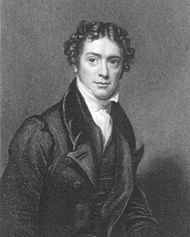[cs_content][cs_section parallax=”false” separator_top_type=”none” separator_top_height=”50px” separator_top_angle_point=”50″ separator_bottom_type=”none” separator_bottom_height=”50px” separator_bottom_angle_point=”50″ style=”margin: 0px;padding: 45px 0px;”][cs_row inner_container=”true” marginless_columns=”false” style=”margin: 0px auto;padding: 0px;”][cs_column fade=”false” fade_animation=”in” fade_animation_offset=”45px” fade_duration=”750″ type=”1/1″ style=”padding: 0px;”][cs_text]Shipwrecks and Salvage > 1. Oceans and Electrolytes >
Describe the work of Galvani, Volta, Davy and Faraday in increasing understanding of electron transfer reactions[/cs_text][/cs_column][/cs_row][/cs_section][cs_section parallax=”false” separator_top_type=”none” separator_top_height=”50px” separator_top_angle_point=”50″ separator_bottom_type=”none” separator_bottom_height=”50px” separator_bottom_angle_point=”50″ style=”margin: 0px;padding: 45px 0px;”][cs_row inner_container=”true” marginless_columns=”false” style=”margin: 0px auto;padding: 0px;”][cs_column fade=”false” fade_animation=”in” fade_animation_offset=”45px” fade_duration=”750″ type=”1/1″ style=”padding: 0px;”][cs_text]
- Luigi Galvani, Alessandro Volta, Humphry Davy, and Michael Faraday were all scientists whose work in the late-eighteenth and nineteenth centuries increased understanding of electron transfer reactions.
| Time of main work | Individual | Relationship to previous individual | Major contributions |
| Late 18th Century |
Luigi Galvani |
– |
|
| Turn of 19th Century | Alessandro Volta | Friend of Galvani |
|
| Early 19th Century | Humphry Davy | – |
|
| Early- to mid-19th Century | Michael Faraday
|
Originally Davy’s assistant |
|
- The complete understanding of electron transfer reactions in terms of ions and electrons was not fully developed until the end of the nineteenth century.
- The contribution of these four scientists allowed Arrhenius to later develop the ionic theory of solutions.
- Arrhenius theory, coupled with Thomson’s discovery of the electron, allowed chemists to fully understand electron transfer electrons.
[/cs_text][/cs_column][/cs_row][/cs_section][/cs_content]


